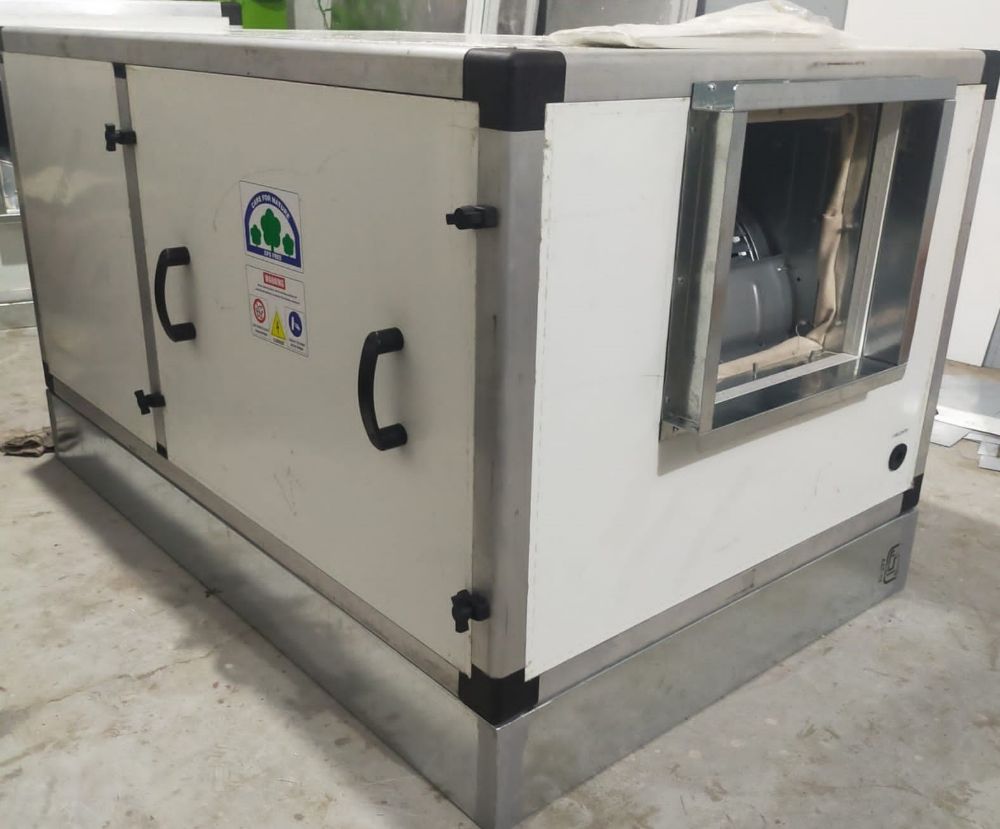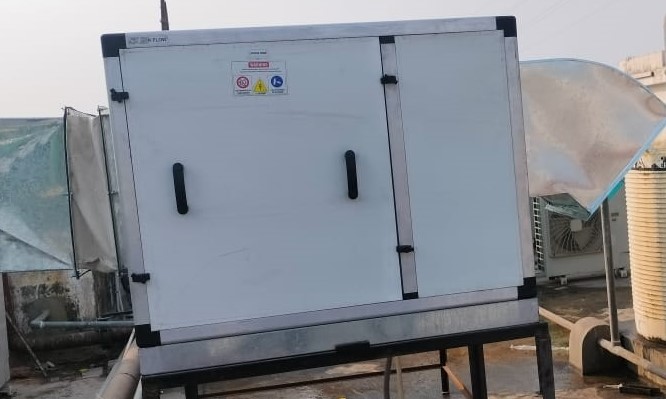Air Scrubber
In industrial plants, manufacturing facilities, commercial kitchens, the air gets contaminated with particles, oils, greases, unwanted gasses and this polluted air if released into the atmosphere will surely result in bad environmental air quality. This is certainly not desired. Therefore, an air scrubber is used to first clean and filter the polluted air from industries, manufacturing plants, and commercial kitchens. And then this clean and filtered air is released into the atmosphere. Therefore, an air scrubber acts as an air cleaner or air filtration system. These days it is mandated by law for industrial plants, manufacturing companies, restaurants, hotels, bars to have air scrubbers installed in order to ensure that clean air is released into the atmosphere. As the numbers of industrial plants, manufacturing plants, restaurants, hotels, bars grow, the need for air scrubber systems also grows. Without air scrubbers, the ambient air quality will deteriorate across the cities. An air scrubber unit typically comprises a box or chamber wherein electric or water mechanism first removes the particles, oils, unwanted gasses from the air and then this air passes through a series of filters before getting released into the atmosphere. This way only clean air is released into the atmosphere. Based on the type of mechanism that is used to clean the exhaust air, an air scrubber is typically categorized in 2 ways namely wet air scrubber and dry air scrubber. As the name suggests, a wet air scrubber uses water to clean the incoming air from the factory or kitchen or industrial plant. Whereas a dry air scrubber uses an electrical system to clean the incoming air from kitchens, factories, industrial plants.

Wet air scrubber:
A typical wet scrubber has 5 stages:
Suction: Incoming exhaust air from the commercial kitchen, industrial plant, or manufacturing factory is sucked into the wet scrubber machine. The ductline in the kitchen, plant, or factory feeds the bad air into the wet scrubber machine.
Spray Nozzles: The second section or the stage in a typical wet scrubber machine is that of spray nozzles. A series of spray nozzles spray the wet substance. Most of the time, the wet substance is water, however, on some occasions, certain chemicals are also added to the water. The incoming bad air when sprayed with water via a series of nozzles loses dust and particulate matter. However, if the incoming air comprises poisonous gasses or oil, then, chemicals are added to the water to remove poisonous gasses or oil from the incoming air. The used water is taken out of the machine via a drain line.
Eliminator: The third section or the stage in a wet scrubber machine is that of an eliminator. The eliminator as the name suggests removes liquid droplets or mist from the incoming air. There are basically 4 types of eliminators that are used in a wet scrubber machine. One, curved blades eliminator facilitates the highest economy with very low pressure drop of the incoming air. Two, Mesh pads eliminator allows for maximum efficiency over 1 micron. Three, packed beds eliminators are used above 10 micron. Four, cyclone separators eliminators are used for highly contaminated incoming air streams. Curved blades eliminators are mostly used in a typical wet scrubber machine.
Fan and motor: This is the fourth stage or section. The blower and the motor are chosen after calculating the amount of air volume per minute that needs to be flushed out from the factory, plant, or kitchen. The blower is normally belt driven. In other words, the blower and the motor have a pulley system. In case, the incoming air has to pass through several bends or has to travel a long distance, then, higher static pressure is desired. And that means, motor rating goes up. The air volume per minute is expressed in CFM (Cubic Feet per Minute). Therefore, the CFM calculations should be spot on in order to flush out the bad air from the factory, kitchen, or plant as quickly as possible.
Outlet: This is the fifth stage. The incoming air has now been cleaned using spray nozzles and eliminators. And through outlet duct lines, the clean air is released into the atmosphere.
Dry air scrubber:
Dry scrubber comprises 5 steps:
Step 1: Incoming polluted exhaust air is fed into the dry scrubber unit. This exhaust air from the factory, kitchen, or plant usually contains fumes, acids, and grease.
Step 2: Pre filter cleans this bad air by removing heavy particles from the air.
Step 3: Electric field then filters the sub micron particles from the air by using the high voltage ionizing method.
Step 4: These particles are collected on a series of opposite charged electrodes.
Step 5: The clean air is then released into the atmosphere.
Advantages of a dry scrubber over a wet scrubber:
- A dry scrubber unit is much more compact than a wet scrubber unit.
- There is no need for any water or pump, therefore, running cost is very low.
- A dry scrubber coupled with UV light (Ultra Violet) also helps in eliminating bad odor from the exhaust gas from the kitchen, industrial plant, or factories.
- A dry scrubber is relatively maintenance free as compared to a wet scrubber unit.
- Since pressure drop in a dry scrubber unit is minimal, therefore, smaller size of blower and motor is sufficient to achieve the same result that is obtained by a bigger blower and motor used in a wet scrubber unit.
Advantages of a wet scrubber over a dry scrubber:
- A wet scrubber unit is superior to a dry scrubber unit when it comes to removing all kinds of acids from the air.
- A wet scrubber unit also manages to remove most pollutants from the air as compared to a dry scrubber unit.
An air scrubber unit is an essential equipment while planning an HVAC system for an office building, mall, hotel, hospital, warehouse, etc. In order to maintain the desired indoor air quality, the stale air or polluted air must be continuously flushed out. An air scrubber unit first cleans this exhaust air before releasing this exhaust air into the atmosphere. The engineering department or the maintenance department is typically in-charge of managing the air scrubber unit in most commercial buildings.

Contact TheSmartHVAC for air scrubber units at [email protected] or call at +919650110202
